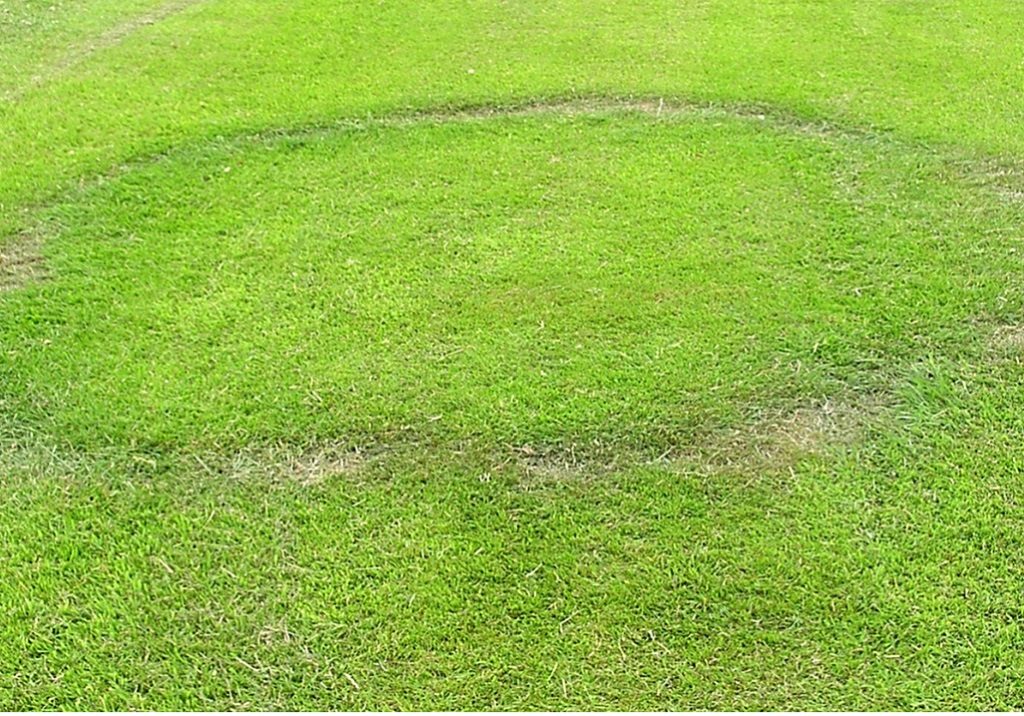Dealing with Fairy Rings on Golf Courses
Control of fairy ring demands a whole change in mindset to tackling almost any other disease in turf, reports Syngenta Technical Manager, Glenn Kirby.
The reason being that, unlike microdochium patch (Fusarium) or anthracnose, we are not actually targeting a disease in or on the turf plant, but a completely separate free-living fungal pathogen. However, its existence, altering the soil profile, can have a severe impact on surrounding turf plants and the playing surface.
That means we have to think about targeting the pathogen in a different way with our integrated approach and fungicide strategy.
Fairy ring has been divided into three types – I, II and III (pictured above, left to right). But that is really just a label to describe the symptoms or effect that the pathogen is having – there are in fact in excess of 60 different fungi that can be contributing to the issue.
Type I is by far the most serious for turf quality, since it can result in dead patches of turf, which can extend to significant areas. However, it is not the fungi itself that is killing the turf, but the fact it results in severe dry patch where turf cannot survive.
Control measures are a combination of fungicides to stop the pathogen developing, along with soil management to alleviate the dry patch and agronomic options to encourage turf growth that will minimize its impacts.
Type II fairy ring can also be highly problematic where the fungi breaks down organic matter to release nutrients that feed turf growth – which results in characteristic dark green patches or shapes. That can be both an aesthetic issue and adversely affect playing surface performance as a result of inconsistent growth.
Finally, the Type III category describes the pathogens which are expressed as mushrooms or toadstools on the surface. In most instances that can be dealt with by regular mowing, but you have to be aware that some of the pathogens may be poisonous and potentially dangerous.
Acknowledging we are tackling a soil-borne pathogen is fundamental formulating a long-term control strategy.

Research has shown best practice is to apply a Heritage fungicide for fairy ring when the soil temperature is consistently in the range of 12 to 15⁰C. Typically that might be in mid to late May, but analysis of GreenCast historic weather records show it might not occur until early July, for example. This year has also highlighted the seasonal variability and need to be flexible on application timing. You can view history for UAE as well by visiting the weather tools tab on www.syngentaturf.ae.
In UAE Heritage Maxx is approved for targeting fairy ring, along with the soil-borne pathogen, take-all. To optimize results it is crucial to get the active into the right zone to reach the disease, where application technique plays a major role.
Knowing where the fairy ring pathogen is active in the soil will help to adopt the most appropriate strategy. Some fungi may be active at the surface, often just under the organic matter layer; others may be at five to 10 cm or deeper in the soil profile. That can be hard to identify. However, taking a soil core and placing it in a plastic bag in warm moist conditions can encourage mycelial growth that will indicate the area of fungal activity.
